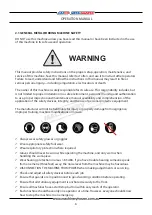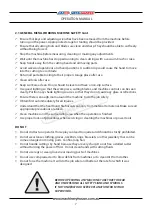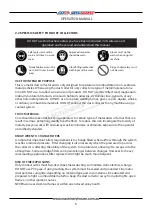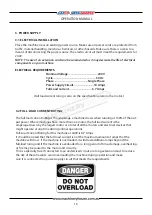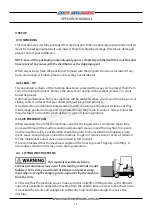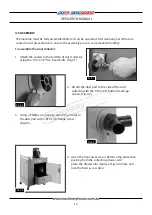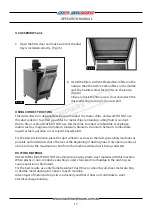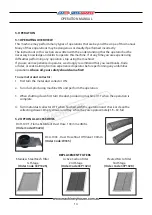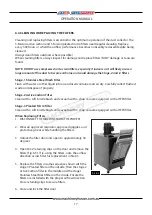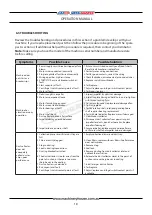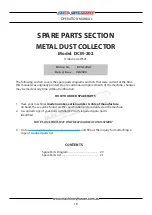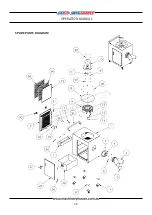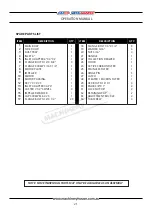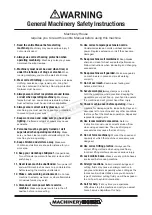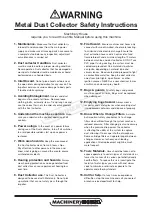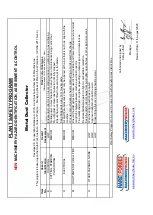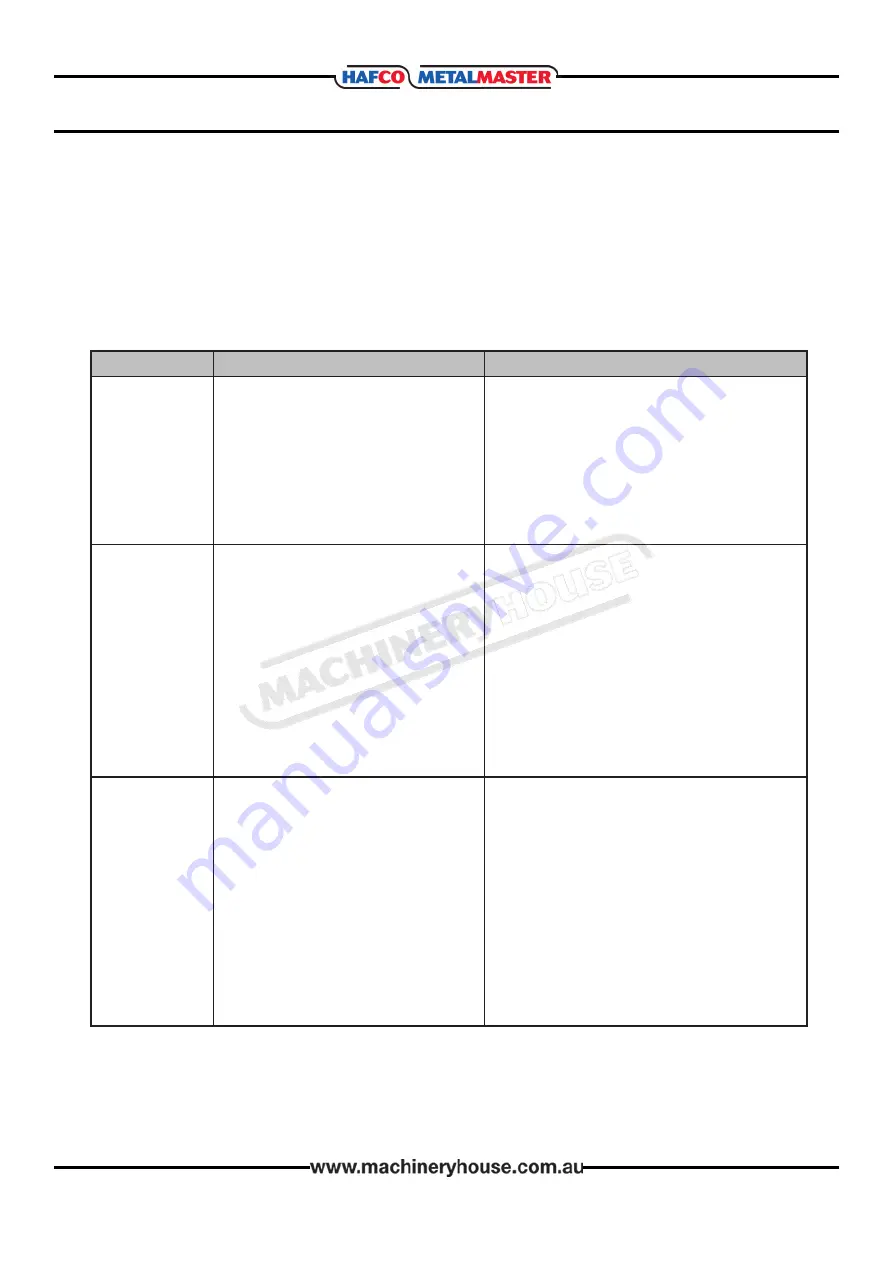
18
OPERATION MANUAL
6.5 TROUBLESHOOTING
Review the troubleshooting and procedures in this section if a problem develops with your
machine. If you need replacement parts then follow the procedure in beginning of the spare
parts section or if additional help with a procedure is required, then contact you distributor.
Note:
Make sure you have the model of the machine, serial number,and manufacture date
before calling.
Symptoms
Possible Cause
Possible Solution
Machine does
not start or a
breaker trips.
1. Power supply circuit breaker tripped or fuse
blown.
2. Motor wires connected incorrectly.
3. Plug/receptacle at fault/wired incorrectly.
4. Wiring open/has high resistance.
5. START/STOP or circuit breaker switch at
fault.
6. Start capacitor at fault.
7. Centrifugal switch/contact points at fault.
8. Motor at fault.
1. Ensure circuit is sized correctly and free of shorts.
Reset circuit breaker or replace fuse.
2. Correct motor wiring connections.
3. Test for good contacts; correct the wiring.
4. Check/fix broken, disconnected, or corroded wires.
5. Replace switch/circuit breaker.
6. Test/replace.
7. Adjust/replace centrifugal switch/contact points.
8. Test/repair/replace.
Machine has
vibration or noisy
operation.
1. Debris caught in impeller.
2. Motor or component loose.
3. Motor fan rubbing on cover.
4. Motor mount loose/broken.
5. Motor bearings at fault.
6. Motor shaft bent.
7. Dust collector not on a flat surface.
8. Impeller damaged or unbalanced.
9. Impeller loose on motor shaft.
1. Inspect impeller for debris or damage.
2. Inspect/replace damaged bolts/nuts, and re-tighten
with thread-locking fluid.
3. Fix/replace fan cover; replace loose/damaged fan.
4. Tighten/replace.
5. Test by rotating shaft; rotational grinding/loose
shaft requires bearing replacement.
6. Test with dial indicator. Replace motor if damaged.
7. Stabilize dust collector.
8. Disconnect dust collector from power. Inspect
impeller for dents, bends, or loose fins. Replace
impeller if damaged.
9. Secure impeller; replace motor and impeller as a
set if motor shaft and impeller hub are damaged
Dust collector
does not
adequately
collect dust or
chips; poor
performance.
1. Collection drawer or air filter dust tray are
full.
2. Filters are dirty/clogged.
3. Clog in ducting.
4. Leak in ducting/connections.
5. Ducting blocked/restricted.
6. The dust collector is too far away from the
point of suction, or there are too many
sharp bends in the ducting.
7. Dust collector is undersized.
8. Run capacitor at fault.
9. Centrifugal switch/contact points at fault.
1. Empty collection drawer and dust tray.
2. Clean filters; replace with new filters if performance
does not improve.
3. Remove clog.
4. Seal leak.
5. Remove ducting from dust collector inlet and
unblock the restriction.
6. Relocate the dust collector closer to the point of
suction; remove sharp bends in ducting.
7. Install a larger dust collector.
8. Test/replace.
9. Adjust/replace centrifugal switch/contact points if
available.
Содержание DCM-202
Страница 20: ...20 OPERATION MANUAL SPARE PARTS DIAGRAM ...



